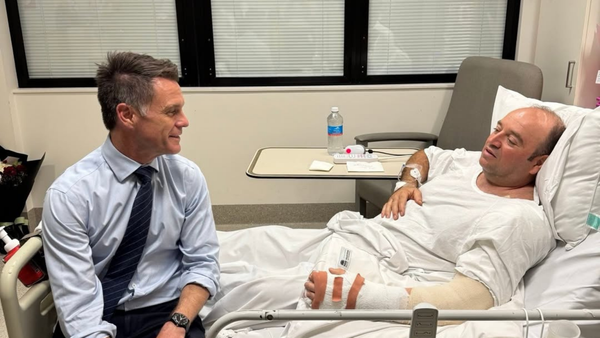Hundreds of thousands of poor Americans are poised to get their disability benefits cut, as the Trump administration moves to reverse a Biden-era change.
Why it matters: It would hurt low-income and disabled Americans at a time when inflation is driving up the cost of food and shelter; and further cuts to Medicaid and food benefits are on tap.
Zoom in: The changes involve Supplemental Security Income, or SSI, a federal program that provides monthly cash payments to people who are very poor and unable to work — typically because they're disabled.
- Often they're older Americans who haven't earned enough during their lifetime to qualify for any meaningful Social Security benefits.
How it works: The maximum monthly SSI payment is about $900 per month. Recipients can't have more than $2,000 in the bank to qualify.
- Beneficiaries receive up to one-third less money if they live with someone who helps them with food and shelter; it's counted as "in-kind support and maintenance."
- If a beneficiary, however, lives with people who are themselves struggling, and using "public assistance," then the federal government won't cut their benefits.
The intrigue: The trick is how the government defines "public assistance." In the past, if everyone in the household was receiving assistance through certain welfare programs, including Temporary Assistance for Needy Families, and some other small programs, then that counted.
- But few people get cash welfare these days —only about 2 in 10 poor people — a far higher share receive SNAP, or food stamps.
- So the Biden administration last year put in place a new rule that if anyone in the household was receiving SNAP — then SSI recipients could still get full benefits
By the numbers: The change meant that about 300,000 people saw increased benefits; and 100,000 more became eligible, according to a government estimate.
State of play: The Trump administration last week proposed rescinding the rule. SNAP no longer counts as public assistance.
- That would mean hundreds of thousands would lose benefits — and it would create a lot of red tape for the Social Security Administration, which administers SSI and is struggling with reduced staffing, says a report from the Center for Budget and Policy Priorities.
Zoom out: The progressive group says that not only would the change mean less money for vulnerable people — the new rules "could discourage families from offering help to their loved ones."
- The upshot: more people would wind up looking to institutional care.
For the record: "The proposed rule would return us to the longstanding criteria and policies that were in place for decades before 2024," a spokesperson for the Social Security Administration said in a statement.
- "We do not expect this return to the status quo to create unnecessary red tape or cause an increase in workload for SSA staff. As is standard with rulemaking processes, the proposed rule will be made publicly available, and the public will be given a chance to comment before the rule is finalized."
The bottom line: The rule change is just one of the ways the White House is moving to cut back help for low-income Americans — the big, beautiful bill recently passed by Congress included cuts to SNAP and Medicaid that will also hurt.







